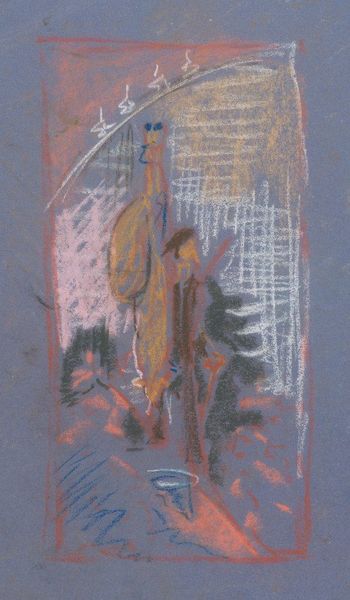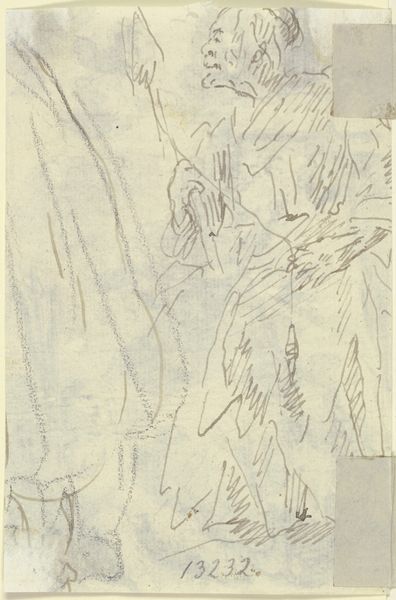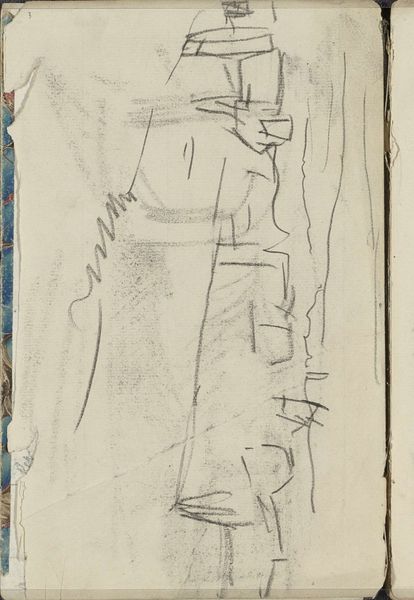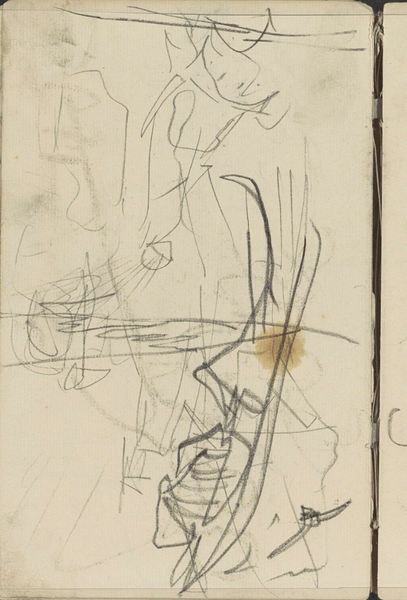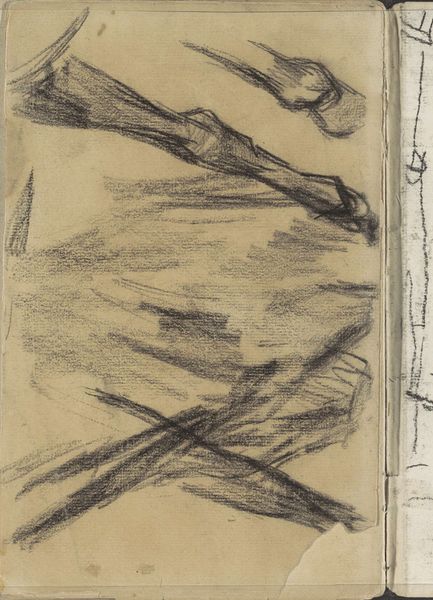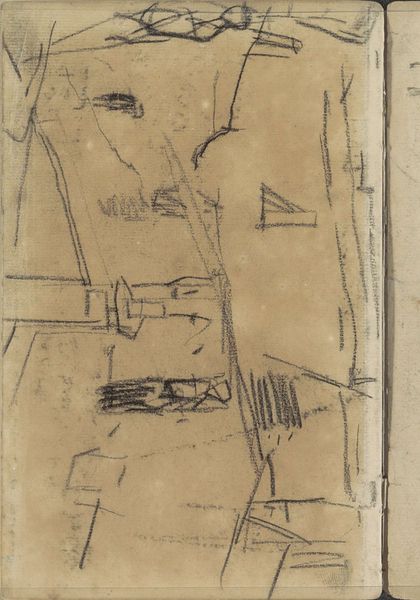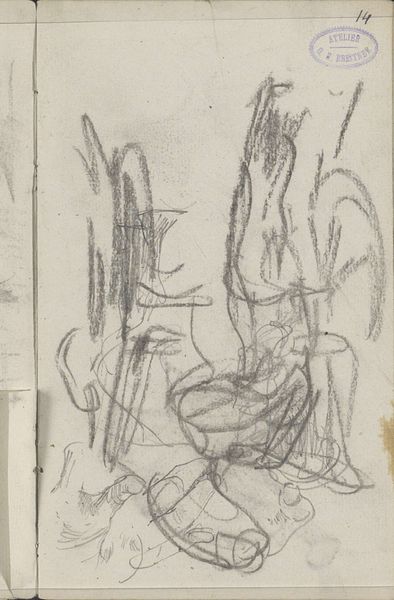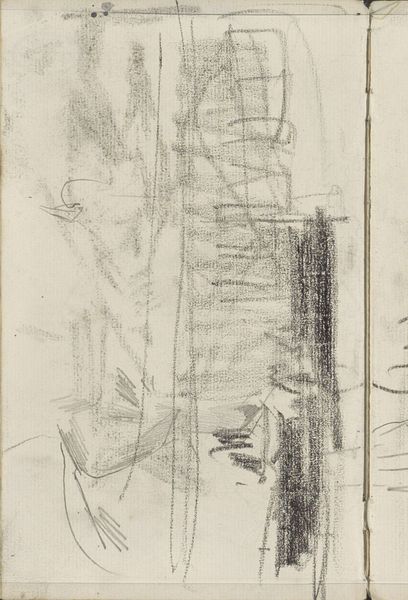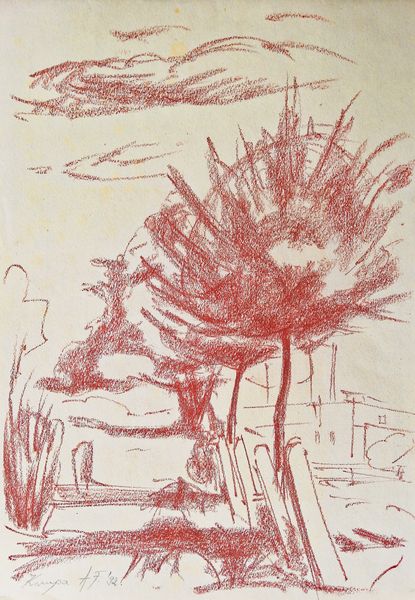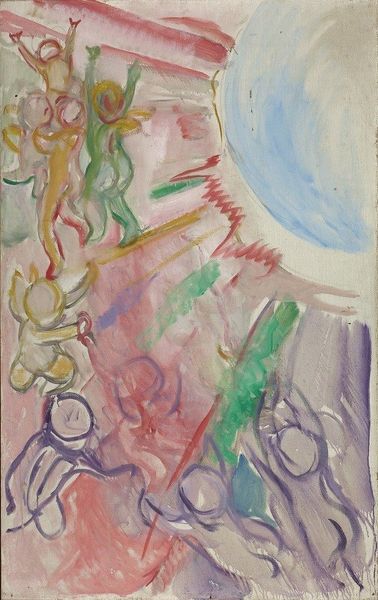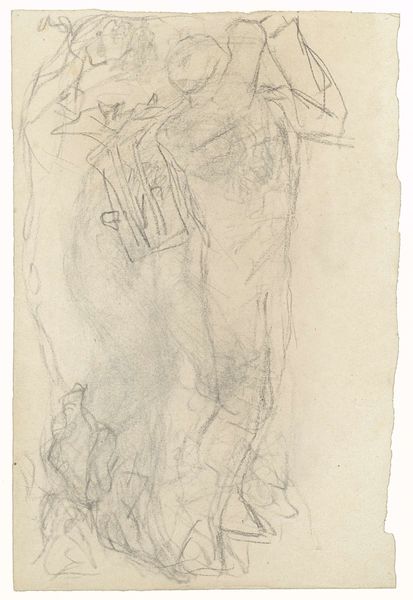
drawing, dry-media, pencil
#
drawing
#
water colours
#
incomplete sketchy
#
figuration
#
dry-media
#
momento-mori
#
pencil
#
line
#
symbolism
Copyright: Public Domain: Artvee
Editor: Munch’s drawing, "Death and Crystallization," made with pencil and watercolors in 1909, feels raw, almost like a frantic sketch. What strikes me most is the stark contrast between the organic fluidity of the skeletal figure and the geometric shapes surrounding it. How do you interpret this work? Curator: It's interesting you notice that tension, because that is indeed at the core of Munch's project here. He's grappling with themes that run throughout his oeuvre: existential anxiety, trauma, and the confrontation with mortality. But it's important to ask, mortality for whom? The 'crystallization' suggests a rigid, almost oppressive structure imposed onto the naturally decaying body. Think about the socio-political context: increasing industrialization, rigid social structures – do you see a parallel here? Editor: I see what you mean! So the skeleton could represent not just death itself, but also perhaps a critique of systems that stifle life? Curator: Precisely! Consider also the use of dry media, pencil marks so faint they almost disappear, it amplifies the sense of precarity. This isn't just a memento mori, but also an observation of power dynamics. Who benefits from this crystallization? Whose lives are constrained, fossilized, even? Editor: It adds another layer, moving beyond the personal to a larger societal critique. Curator: Exactly. And what does it mean, then, for us, in the present day, to confront these ‘crystallized’ power structures? How do we find fluidity and resist such constraints? Editor: This reframes how I understand Munch; I often think about his expression of inner turmoil, but I had not considered that it might mirror structural issues too. Curator: Indeed, this perspective can bring us to reflect about power structures even now, while facing existential matters.
Comments
No comments
Be the first to comment and join the conversation on the ultimate creative platform.
